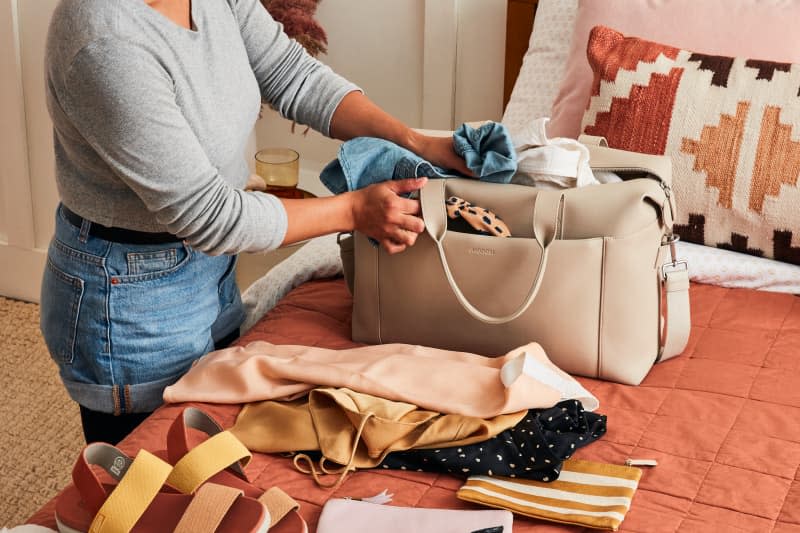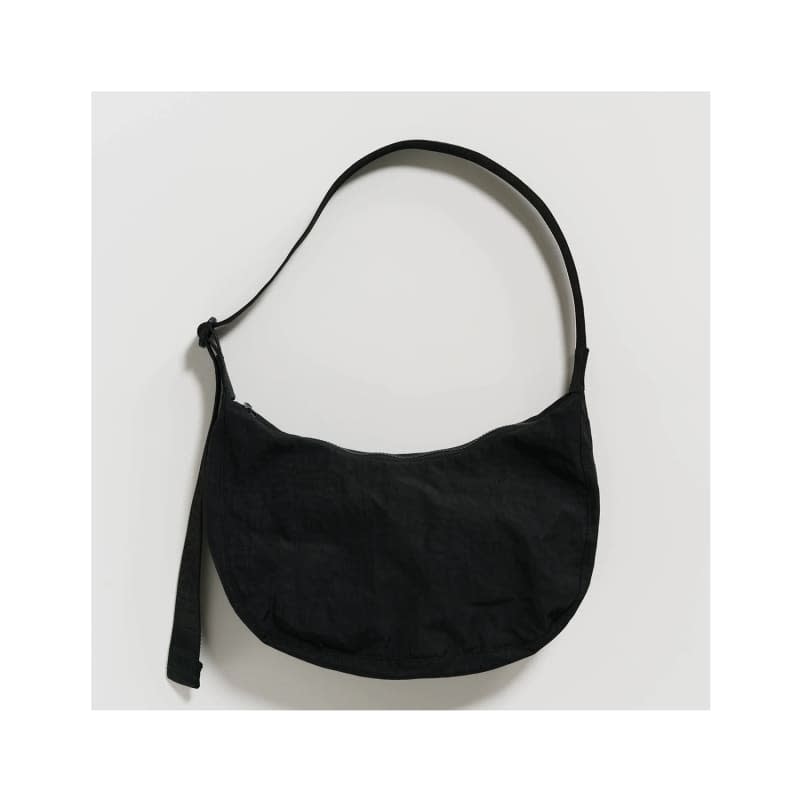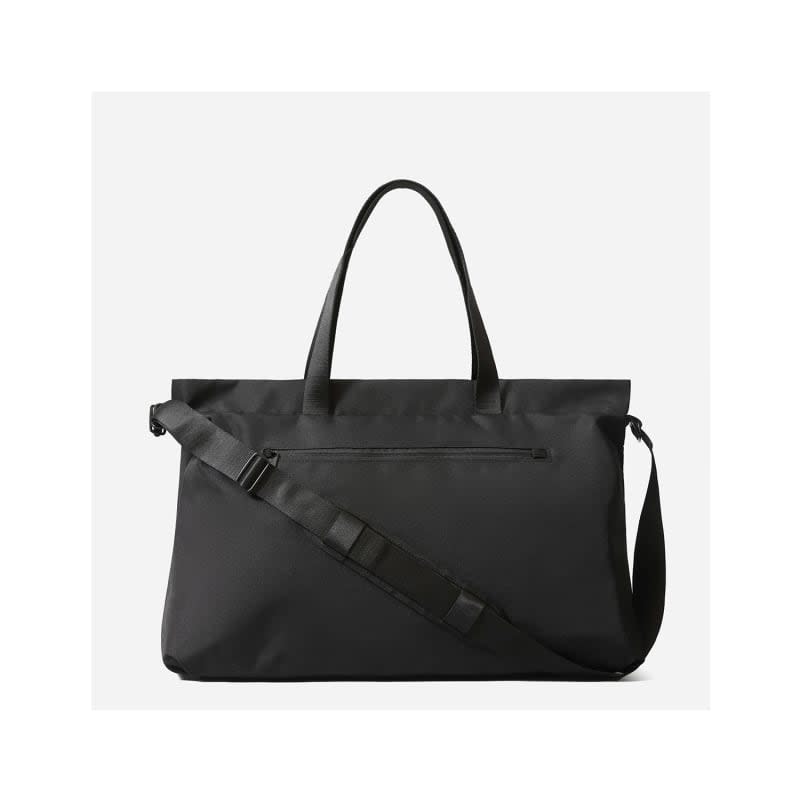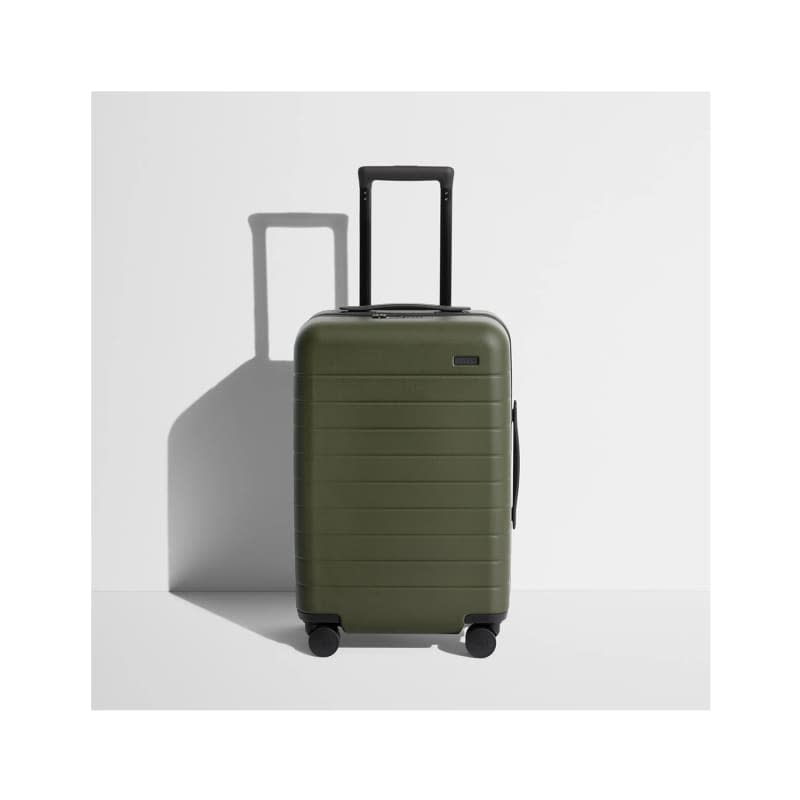The 3-Bag Method That Saves Me So Much Money (and Stress!) Every Time I Travel

As a habitual overpacker, it’s taken me years of trial and error to find my ideal packing system. Nothing makes me feel more inadequate than realizing I haven’t packed correctly; at the same time, shrinking baggage allowances and rising luggage fees mean every inch of bag space is precious.
In the past, my travel preferences have meant shoving my overstuffed leather purse under the seat in front of me, digging around in its depths for tiny items (and panicking that I’ve lost them), and having absolutely zero wiggle room to accommodate any extra poundage from my checked bag. Needless to say, this was a stressful process that made travel even more anxiety-inducing than it already is. Then, I discovered the three-bag method.
What Is the Three-Bag Method?
The basic premise of the three-bag method is a smaller bag inside a larger bag, plus your free carry-on suitcase. It sounds incredibly simple — and it is — but the key to a truly effortless travel experience is which three bags you use. I’ve experimented with different purses and bags, but this method didn’t truly click until I paired the Everlane ReNew Transit Weekender duffel bag with my Baggu Medium Nylon Crescent bag. The third bag is either my well-traveled Away Carry-On, which is compact enough to comply with even the most stringent requirements, or its Large checked bag counterpart.
Here’s how the three-bag method works.
Medium Nylon Crescent Bag
My medium Baggu crescent carries the most essential of my essentials — wallet, passport, phone, book, mini bottles of remedies (like Advil and Dramamine) and an obligatory bag of M&Ms. I also use a small zipper pouch to keep my chargers and AirPods in one safe space (this method is bags all the way down). Everything I need is organized, secure, and easily accessible throughout my journey.
The ReNew Transit Weekender
The Everlane weekender bag contains the Baggu crescent, along with other, bulkier nice-to-haves — a sweater for the plane, a magazine, my Nintendo Switch. My older sister introduced me to this bag for its near-magical ability to fit under the seat in front of you while carrying a lot of stuff. I usually leave space in this bag for any souvenirs, which also ensures the bag will compress to fit under the seat. If I’m not checking a bag, I’ll also keep my Ziploc bag of toiletries at the top of the bag so I can easily pull it out at security, and I’ll put any bulkier valuables (e.g., jewelry or paperwork) in the zipped pocket to keep them secure without cluttering up my essentials.
The Carry-On
Lastly, unless I’m checking a bag, my Away carry-on goes in the overhead bin. The Everlane weekender has a special pocket that slides over a suitcase’s handle, so it sits securely on top of my Away when I roll it. I love having one fewer bag to tote through the airport, but when I do have to carry the weekender, I can wear it as a cross-body or as a tote.
I happen to have all three bags in black, which looks cohesive while hiding scuffs and stains, but you could also pick out bright or contrasting colors for a look that fits your style.
Wait … I Thought You Could Only Carry Two Items onto the Plane?
That’s correct — and boy, do the gate agents take it seriously these days! I’ve seen quite a few travelers stuck at the gate struggling to consolidate several items into two before they can board. Meanwhile, this weekender + carry-on combo has never gotten a second glance at the gate.
Here’s why: My Baggu crescent easily fits into the weekender, the weekender is compact enough to be used as my personal item, and my carry-on is obviously a carry-on. While a completely full weekender is closer to carry-on size, when it’s partially full, it will effortlessly compress to fit the specifications for personal items. That’s why I never pack it to bursting unless I’m using it as my carry-on bag.
How the Three-Bag Method Saves Me Money (and Hassle)
First of all, the three-bag method means I almost never need to check a bag unless I’m going on a longer trip — and when I do check a bag, this method has saved me hundreds of dollars in oversized baggage fees.
Take my recent weeklong trip to London, as an example. My boyfriend and I were traveling with one checked bag between us, plus his backpack and my trusty weekender bag (containing my Baggu crescent, of course).
Despite our best packing efforts, our checked back was four pounds overweight. Our friendly attendant pointed out my half-full weekender bag — “You can fit tons in that” — and advised us to move over a few heavier items. After relocating a few sweatshirts to my weekender, we’d reduced our checked bag weight by five pounds and saved $100 on the overweight fee.
I easily stashed my now-full weekender in the overhead bin as my carry-on, while I kept my essentials under the seat in front of me in my Baggu. On the way back, the weekender came to the rescue again by letting us fit the gifts and souvenirs we had accrued without having to pay to ship them home.
The three-bag method makes it easy for me to stay organized at the airport and on the plane. It’s saved me hundreds of dollars and makes me feel like a put-together jet-setter even when I’m running on two hours of sleep and an M&M-induced sugar high. Most importantly, it prevents me from losing essential items.
While I may stress about which items to bring, I never worry about how I’m going to carry them to where I’m going — and that peace of mind is worth its weight in gold (with no heavy baggage fees).




